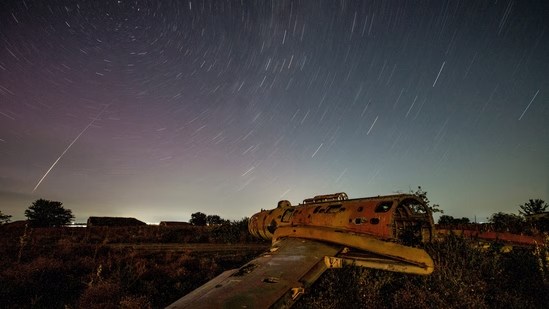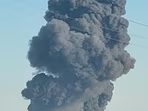1st human-made meteor shower: How a NASA mission could make the impossible possible
The extent of man-made creations is imaginably vast but still limiting. Countering that belief, a NASA mission could now rain down the first human-made meteor shower – all thanks to space debris.

Two years ago, the US space agency's Double Asteroids Redirect Test (DART) spacecraft deliberately crashed into the asteroid moonlet Dimorphos (orbit asteroid Didymos) while testing the Earth's planetary defence capabilities. The September 2022 mission, initially designed to test whether humanity could deflect a potentially lethal asteroid away from our planet's path, ultimately also ended up reshaping the moonlet.
“The entire shape of the asteroid has changed, from a relatively symmetrical object to a 'triaxial ellipsoid' — something more like an oblong watermelon,” NASA's Jet Propulsion Laboratory's (JPL) Shantanu Naidu said in a statement.
If new reports come to fruition, that's not all the mission will have accomplished.
Also read | Sunita Williams, Butch Wilmore return to earth row turns into a contentious ego tussle between NASA and Boeing
Space debris caused by the NASA mission could potentially result in a faint meteor shower on Earth
According to an early August Cornell University study, the crash's fragments could eventually land around Earth and Mars in 10 to 30 years. The resulting visual could turn out to be a man-made meteor shower that potentially keeps raining down for 100 years. Scientists also say that DART's collision with the Dimorphos produced over two million pounds of rocky debris.
“Once the first particles reach Mars or Earth, they could continue to arrive intermittently and periodically for at least the next 100 years, which is the duration of our calculations,” Eloy Peña Asensio, a researcher for the Deep-space Astrodynamics Research and Technology group at Italy’s Polytechnic University of Milan, told CNN.
Asensio added that the resulting material “could produce visible meteors (commonly called shooting stars) as they penetrate the Martian atmosphere.”
Also read | Is LeBron James' support for Caitlin Clark all pretence? Ex-ESPN analyst theorises Lakers star's ulterior motive
On the other hand, he reportedly reassured that the debris-turned-meteor shower would not pose a threat to the Earth's surface as the individual pieces would be significantly small, ranging from grain-type particles to a size similar to smartphones. The expert also inferred that if these particles initially detached from Dimorphos upon impact at the speed of 1,118 miles per hour, there was a great chance of some reaching Mars. Meanwhile, other faster-moving fragments travelling 1,118 miles per hour could reach Earth.
While the possibility of these fragments reaching our planet is deemed unlikely, study authors aren't entirely ruling it out yet. On the off chance the debris arrives here, “the resulting meteor shower would be easily identifiable… as it would not coincide with any known meteor showers.”
“These meteors would be slow-moving, with peak activity expected in May, and primarily visible from the southern hemisphere, seemingly originating from near the Indus constellation.”
Disclaimer: The copyright of this article belongs to the original author. Reposting this article is solely for the purpose of information dissemination and does not constitute any investment advice. If there is any infringement, please contact us immediately. We will make corrections or deletions as necessary. Thank you.
Title:1st human-made meteor shower: How a NASA mission could make the impossible possible
Url:https://www.investsfocus.com







